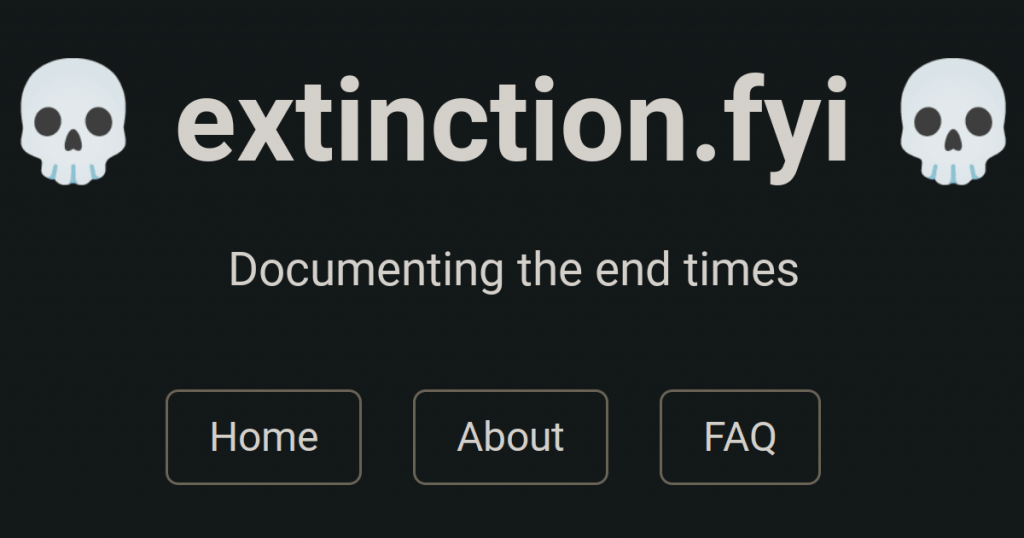New side project: extinction.fyi

After the modest success of eink.link, I’ve decided to embark on another side project. This one also has a cool domain in the form of extinction.fyi and is a place where I can write about all of the death, destruction, and havoc I see being visited upon the planet we call home.
As my wife pointed out, it’s not the cheeriest thing to be doing, but here’s the About page I composed this morning to give a flavour of why I decided to create the site:
This website is a project of Doug Belshaw. I’ve been concerned about the impact we’ve been having on the Earth for a while, and have been paying attention to the work of people like Vinay Gupta and the Dark Mountain community.
The tipping point, though, was reading Jem Bendell’s paper Deep Adaptation: A Map for Navigating Climate Tragedy. It put things in such stark terms that it prompted me to start trying to think more deeply about the end of our species.
I tend to make sense of the world through writing and documenting, so I thought I’d set up this simple site as a way to help me prioritise my own time and effort. It may also be useful as a place to point others who may find this kind of resource useful or provocative.
Not everyone is motivated into action by reading about death, destruction, the ineptitude of our politicians, and the corruption of big business. So, if you would rather read positive news on this topic, I recommend the excellent Future Crunch.
You can get in touch at: [email protected]
There’s an auto-generated RSS feed for the site which you can subscribe to. Let me know your thoughts in the comments! (unless they’re the same as my wife’s, in which case I get it) 😉
This post is Day 94 of my #100DaysToOffload challenge. Want to get involved? Find out more at 100daystooffload.com. Image via BBC News.


